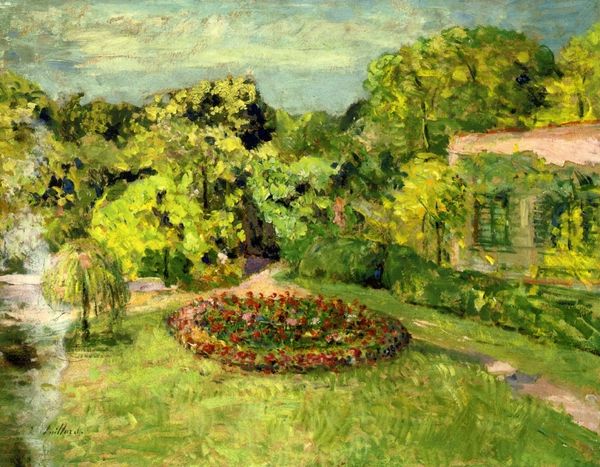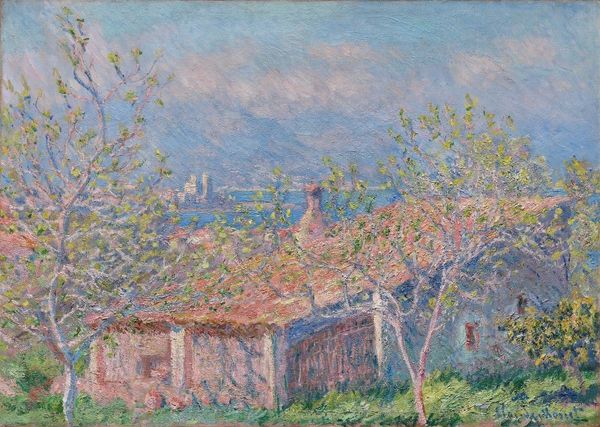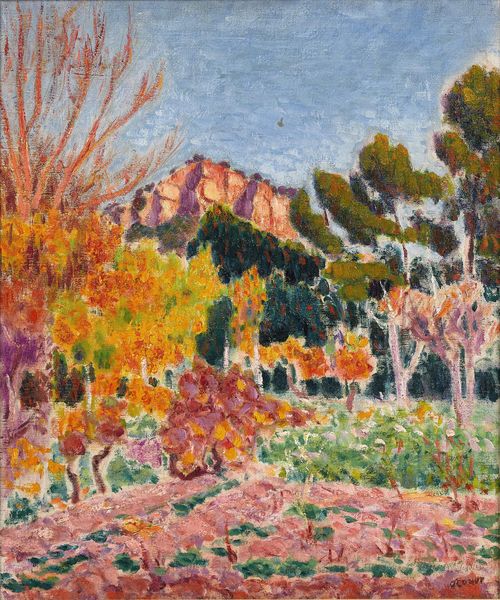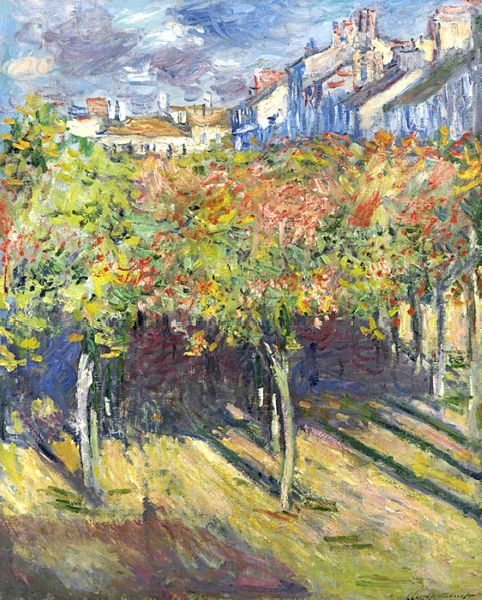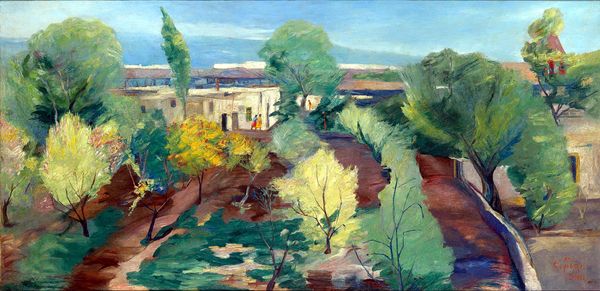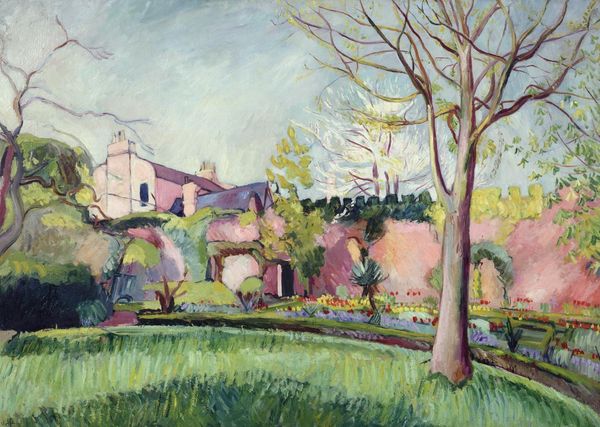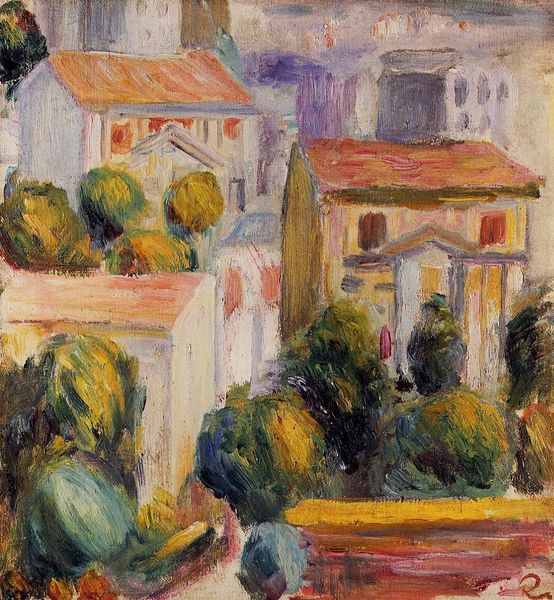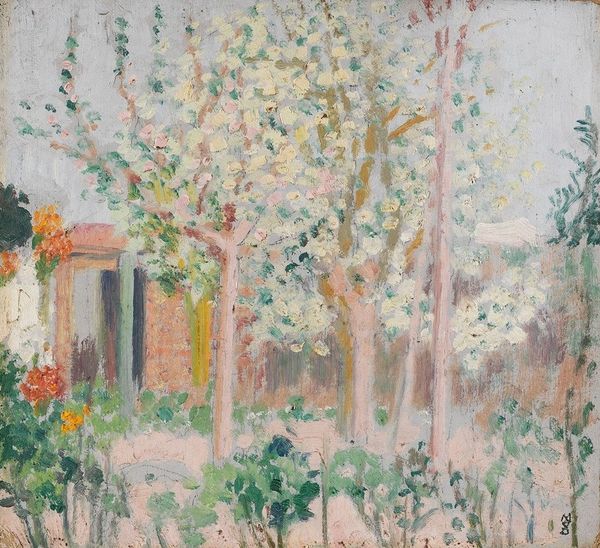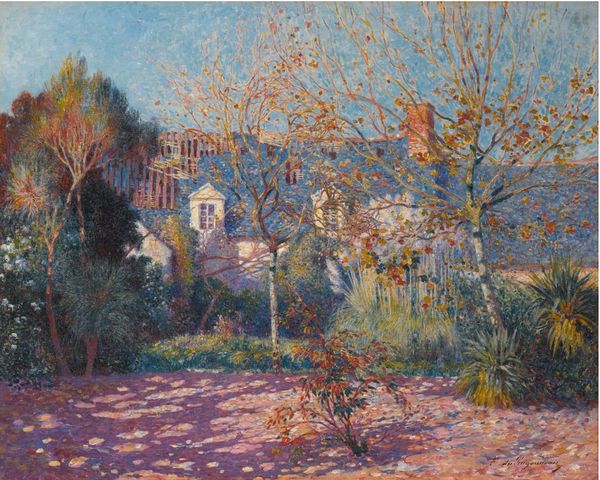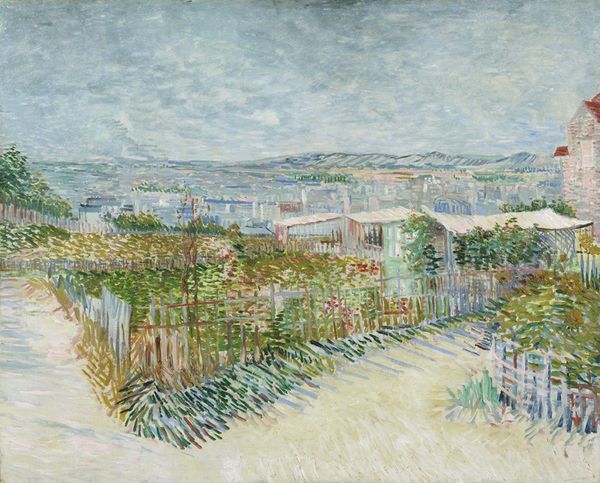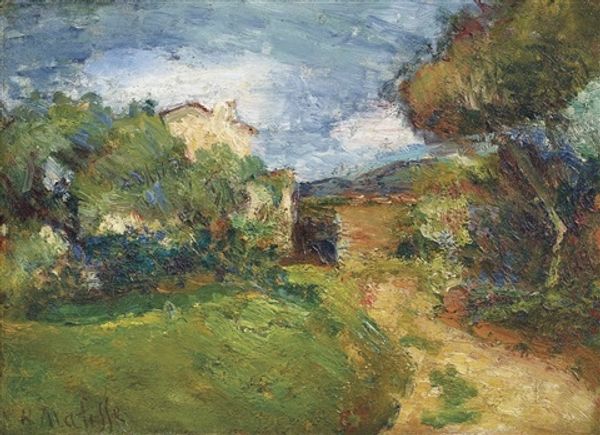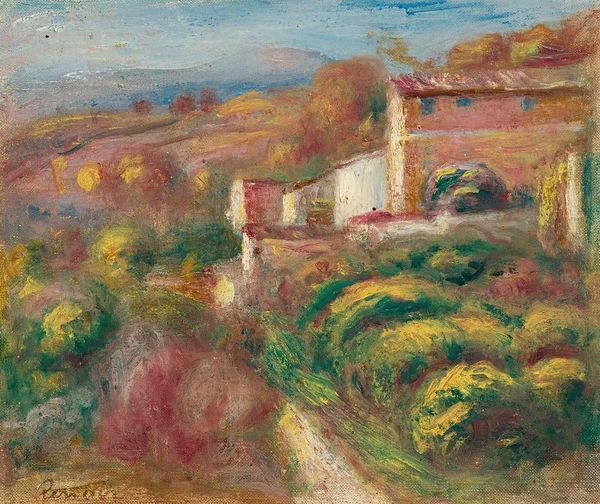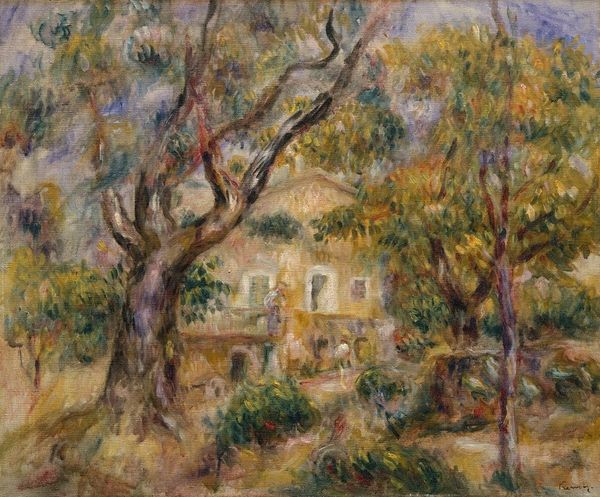
painting, plein-air, oil-paint
#
painting
#
impressionism
#
plein-air
#
oil-paint
#
landscape
#
house
#
impressionist landscape
#
nature
#
oil painting
#
cityscape
#
post-impressionism
Copyright: Public domain
Curator: This is Claude Monet's "Bordighera, the House of the Gardener," painted in 1884. Editor: It's incredibly vibrant! The eye struggles to settle; it jumps all over the canvas with those flecks of color. Is it oil? The materiality really lends to that tactile feel of the foliage. Curator: Yes, it's oil on canvas, created en plein air. Considering the late 19th-century context, painting outdoors allowed Monet to capture the fleeting qualities of light and atmosphere directly. Think of the readymade paints in tubes allowing for a more portable practice, a shift from studio-bound creation to an engagement with labor involved in transporting materials. Editor: Right, and those impasto strokes, the thick application of paint, create a wonderfully textured surface. Notice how the composition is structured? The houses are almost secondary to the riot of vegetation. The sea's horizon, the line behind all that greenery is critical too; it’s bisecting the top of the canvas so neatly and calmly. Curator: Monet spent time in Bordighera specifically to capture the unique light and vegetation of the Italian Riviera. This wasn't simply about depicting a beautiful scene, though—consider the labor involved in cultivating and maintaining such a garden. The "house of the gardener" suggests a working relationship to the landscape, not just a passive observation. Who exactly were the garden workers? What did it mean for them to make and care for this spectacle? Editor: Interesting point. From a formal perspective, that dense layering of greens, yellows, and reds is almost overwhelming. And then your eye hits those rectilinear house shapes as they contrast to that foliage in the immediate foreground; there is such a fascinating dialog established. How does this fit into the overall arc of his Impressionist project? Curator: It reflects the Impressionist fascination with capturing transient moments but also marks a shift towards a more subjective, expressive style which is categorized under post-impressionism.. Think of Monet later at Giverny! Here he’s responding to specific conditions of the Riviera; the accessibility of premixed colors and transportable painting easels further liberated artists to document specific environmental spaces in short windows of time. Editor: Fascinating how those innovations affected everything about process! Thank you for highlighting the historical circumstances and for adding some new perspective on something I looked at only formally just moments before. Curator: My pleasure. I appreciate your fresh, incisive read on its composition, as well! It is always useful to remind people about all of the economic processes behind what appears simply as a "beautiful view" in art.
Comments
No comments
Be the first to comment and join the conversation on the ultimate creative platform.
